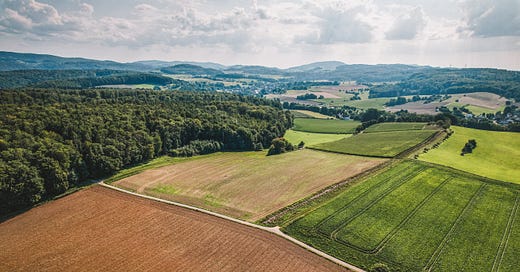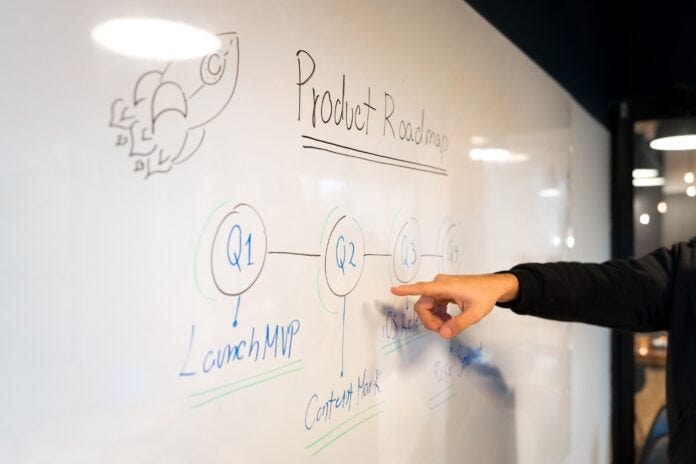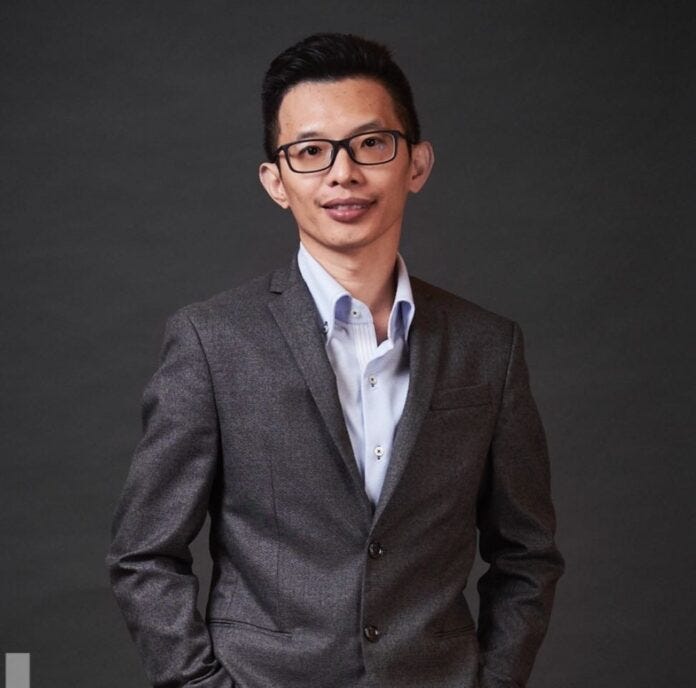SAT.Asia: Developing Tailored Solutions For Malaysia's Agriculture Industry
Welcome back to an all-new Head’s Up. It’s been an interesting couple of weeks and just before you go on to read the feature of the week, we are excited to share with you some of the progress we have made over the last couple of months.
With Head’s Up being only in a newsletter format, part of our goals were to upscale and expand the work we did onto a bigger platform. Today, we are proud to share that we have recently launched Disruptr MY, with the support and funding from Winacore Capital.
Moving forward, Disruptr will be featuring the latest news, interviews with emerging players and industry movers as well as insights from the ecosystem. Head’s Up will continue to bring you bite-sized contents with a weekly feature along with the top events that are taking place.
Coming back to our issue today, Head’s Up interviewed Afif Badhrulhisham, Head of Business Development of SAT.Asia on defining Agriculture 4.0, the progress in Malaysia and what does it take to grow the agri-industry in Malaysia.
And right before that, here are some news gracing our headlines.
News
World Bank: More Flexibility Required To Stimulate VC Activity In Malaysia
The World Bank’s “Malaysia: Assessment of the Start-Up Financing Ecosystem” report has identified two main funding gaps among startup lifecycles in Malaysia. The first of these occurs during the ideation stage, involving businesses facing a need to develop a Minimum Viable Product (MVP) and those in the early-stage Series funding in the Series A and B rounds.
The report further highlighted that in recent years, the government grant funding has been moving towards concentrating on the commercialisation stage of a firm’s lifecycle.
In addition to this, an accompanying study in the report cites the need for greater rebalancing of support towards start-up financing and proposes the need to recalibrate existing programmes towards the current needs of SMEs.
For further reading, click here
Three in Five CIOs Would Replace Half or More of Their Current Technology If Given Opportunity
A new global research study from Lenovo reveals how the CIO role has evolved, shedding light on growing areas of responsibility and increasing influence in the C-Suite, as well as removing barriers to business growth.
CIOs are increasingly tasked with connecting with key stakeholders across the organization to ensure alignment and drive execution.
With IT enmeshed in every facet of a business, CIOs believe that their organizations must continue to invest in digital transformation to remain relevant.
For further reading, click here
Ant Group Announces New Appointment As SEA Regional General Manager
Ant Group has appointed Jia Hang as the Regional General Manager for Southeast Asia.
The newly created role extends Ant Group’s ongoing efforts to strengthen its talent and capability building in the region and its commitment to better support individuals and local and regional businesses, especially SMEs to ride the wave of the digital economy.
Speaking of his appointment, Mr. Jia Hang said: “Amid a stronger push for businesses to recover and thrive by advancing digitally to innovate for the future, we must be right at where our customers are.
For further reading, click here
Instahome Adds Leon Kong and Kambiz Khanlari As Senior Hires
Catcha Group-backed real estate technology company, Instahome, appointed Leon Kong as Malaysian Country Manager and Kambiz Khanlari as Chief Technology Officer as part of their efforts to scale the company.
Leon has an enviable pedigree having served the industry for nearly two decades, helming leadership roles in high-growth online real estate and PropTech businesses. In 2003, Leon co-founded iProperty Group, one of Southeast Asia’s most successful startups that now operates in several Southeast Asian countries, including Malaysia, Singapore, Indonesia and Thailand.
For further reading, click here
Q&A with Afif Badhrulhisham, Head of Business Development of SAT.Asia
How would you define Agriculture 4.0? How can it benefit farmers nationwide?
Agriculture 4.0 definition varies depending on who you ask. However, the one I live by is connected farming. Essentially in AR4.0, all elements that make up a farm including workers, soil, weather, crops, inputs and all factors affecting the quality of the produce are interacting with each other, by way of sharing data and adjusting to them for optimum output.
Only by having reliable, consistent, and sizeable data would enable the farmers and authorities to see the bigger picture and fine tuning the minute details of the whole farming process. This would benefit farmers in terms of improving efficiency, minimising waste, and discovering opportunities for further technology applications such as automation.
In terms of realising a successful Agriculture 4.0, what is the progress like in Malaysia?
Malaysia is making progress, especially with the introduction of national policies on digital transformation, IR4.0 and food security where Agriculture 4.0 technologies feature heavily. We do however need to pick up the pace as relatively Malaysia is still behind most countries when it comes to the technology usage in farming.
Farmers are starting to realize the value and potential of adopting such technologies, but still need the push from authorities and industry players to truly integrate these technologies in their daily operation. These technologies are still seen as luxury instead of necessity, partly because of prohibitive setup cost, lack of proper training and education as well as immediate incentives for them to take up technology.
What challenges do farmers in Malaysia face and how will your solution help them out?
The biggest challenge of any farmer in the world is the rising cost to grow crops due to scarcity of resources. As such farmers need to improve efficiency and transform their farming operations to a much leaner model. In order to do so, they would need to know what needs fine tuning, when to apply it and what would be the impact towards their bottom line.
This can only be obtained through thorough data analysis taking into account all the factors contributing to the productivity and efficiency of a farm. To do such analysis, a proper data acquisition system is needed so that the farmers can collect and collate the data with minimal effort and cost while preserving their integrity. This is where SM4RT TANI and UrusTani come in.
Both technologies provide just the tool needed by the farmer to ensure that data are collected properly, which would later enable them to introduce steps to continuously improve their operations. SM4RT TANI IoT sensors collect environmental data autonomously without any human intervention and effort, while UrusTani provides the platform for farmers to plan and record the whole farming operations. Both data can then be overlaid and proper data analysis can be done to discover improvement opportunities.
How is SAT.Asia aiming to champion the growth of Agriculture 4.0 in Malaysia through the involvement of sustainable solutions involving IoT technology?
The biggest obstacle for technology growth would be the cost of adoption. Another obstacle would be the complexity of the technology that may discourage the farmers to adopt them altogether and revert to the old and familiar ways of farming. Hence to champion sustainable Agriculture 4.0 technology in Malaysia, SAT.Asia aims to develop and provide simple and affordable technologies for farmers to use.
The technologies shall be tailored to Malaysian applications and requirements and made affordable by using as much local content and talents as possible. The solutions offered by our technology would also be sustainable as it is home grown hence negate our dependency towards foreign techs and expertise.
Our partners include researchers, device makers, subject matter experts, government agencies, educational institutions and industry players; by working together with all of them, SAT.Asia is able to always improve the solutions and adapt to everchanging requirements and challenges in agriculture.
How will your organisation work together with other industry leaders, and can you share who you will be working with?
Like I mentioned before, we are working closely with industry leaders to ensure our technologies and solutions stay relevant and ahead of the curve. With input such as the current challenges, anticipated challenges, and opportunities as well as the latest trends in the industry, SAT.Asia is always a step ahead in providing solutions that will help the industry now and beyond.
They also help validate our solutions by carrying out pilot projects, case studies, product design projects as well as engagement programs with farmers. Our industry player partners include MARDI Corporation, Top Fruits, SMaju Agro Venture and KOSAHABAT among others.
We are also working with local universities such as Universiti Malaysia Pahang (UMP) and Universiti Malaysia Kelantan (UMK), as well as government agencies such as the Malaysian Pineapple Industrial Board (MPIB) and Lembaga Pertubuhan Peladang (LPP). These partners are expert in their fields and work closely with our teams in developing Agriculture 4.0 solutions.
Can you share more about what SAT.Asia does and what its aspirations are?
SAT.Asia is an engineering and technology company specializing in providing high-end technical solutions for all our customers. We design and integrate IoT solutions for various industries such as aerospace, manufacturing, asset management and agriculture.
We have our own locally grown team of highly skilled engineers and developers working together in developing engineering and technological solutions for our customers.
Our aspiration is to be a company that will engineer a better tomorrow for the country, by producing elegant and viable solutions that are accessible to all. We would like to be the company people will go to for cutting-edge yet practical solutions to their problems.
What are some of your significant moments of 2021 and what do you hope to achieve this year?
One of our proudest moments was when we had our first SM4RT TANI IoT sensors installed in a pineapple farm in Selangor Fruit Valley. It was a collaboration with MDEC, and at the end of the program, our solution was rightfully vetted and validated by both MDEC and MPIB. This was the validation we worked so hard to get and it was such a relief for our engineers to get the nod from industry leaders.
Another significant moment was when we launched the first version of UrusTani, which starts the ball rolling for the development for our more powerful version of the platform, coming soon in 2022. For this year, we aim to further widen our footprint by installing more IoT sensors and get more farmers onboard UrusTani. We managed to secure sizeable orders and 2022 will be the year we deliver them to our customers.
We are also launching our next SM4RT TANI product that integrates digital Business Matching Platform with our current Digital Farm Management System (UrusTani) and IoT. These will complete the super agriculture app suite where we provide end-to-end solutions to our customers.
What challenges do you face in expanding your presence and growth in this industry?
The biggest challenge is still the cost to develop tailored solutions for Malaysian agriculture industry. As we develop our solutions and test them out on the field, we discover more and more requirements and opportunities we can’t simply ignore, as such to have enough runway for us to produce the best versions of our solutions remains the biggest challenge.
We are looking forward to the supports provided by our government in realizing our dreams, and welcome investors to build the industry together with us. Another challenge is to educate the users on what technology can do for agriculture, and the value it will unlock. We need to do this as fast and effective as possible so that Malaysia can catch up and be at the forefront of Agriculture 4.0.
What more can the government do in terms of growing the implementation of tech into the agri industry in Malaysia?
One of the many suggestions we brought forward was to revamp our subsidies, grants, and financing facilities for agriculture. It is time for us to have more funds available for farmers to get their hands on technology, as well as for us to have technology as the prerequisite for any subsidies and grant applications in the future.
This would push our farmers to adopt technology faster and would also incentivise the tech industry to develop more relevant and affordable technologies for farmers to use. We also should enforce policies of using local talents and technologies more in agriculture.
Introducing Buy Malaysian Technology First campaign and provide platforms for local tech companies to showcase their products and services would be a good start. Furthermore, attracting young talents to join agriculture is also important.
Young farmers tend to be more tech savvy and open to adopting new technologies. These young farmers should be given more opportunities in trying out new techniques and technologies, as well as the opportunity to become icons in the industry. They can be the trend-setter for the industry and lay a solid foundation for Agriculture 4.0 to grow exponentially in the next decade.
Whether it’s a feedback or if you would like to reach out to us via headsupnewsletter@gmail.com








